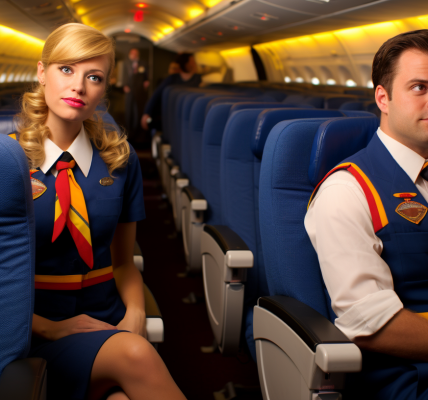In a recent and unsettling incident, an airliner has come under scrutiny after its pilots succumbed to sleep, leaving the aircraft unmanned for nearly half an hour during flight. This alarming event has sparked a widespread investigation and raised serious questions about the safety protocols and working conditions within the aviation industry.
The incident, which could have ended in catastrophe, fortunately concluded without harm to the passengers or crew. However, it serves as a stark reminder of the human limitations facing pilots and the critical need for the aviation sector to address these challenges proactively.
The Human Factor in Aviation Safety
At the heart of this incident is the undeniable truth that pilots, despite their extensive training and expertise, are not immune to the basic needs of the human body, including the need for rest. The pressures of maintaining rigorous schedules, managing the complexities of modern aircraft, and navigating through challenging weather conditions can take a toll on even the most experienced pilots.
This event underscores the importance of re-evaluating current practices regarding pilot schedules, rest periods, and overall workload. It also highlights the potential benefits of incorporating more advanced technology to assist pilots and ensure the safety of flights, even when human factors might fail.
A Call for Action and Innovation
The aviation industry must take this incident as a wake-up call to strengthen safety measures and consider innovative solutions to support pilots. This could include more sophisticated autopilot systems capable of handling a wider range of scenarios, enhanced training programs focused on managing fatigue, and stricter regulations governing flight schedules to ensure pilots are well-rested and alert throughout their duties.
Moreover, this situation opens the door for discussions about the future of aviation safety, including the potential for fully autonomous flights. While the technology for pilotless aircraft is still in development, incidents like these could accelerate interest and investment in such innovations, potentially transforming the way we think about air travel and its safety.
FAQ
Q: What caused the pilots to fall asleep?
A: While the specific details of this incident are under investigation, it is generally understood that fatigue and the demanding nature of piloting can lead to such situations.
Q: Are there existing regulations to prevent pilot fatigue?
A: Yes, there are regulations in place designed to manage pilot work hours and rest periods. However, this incident suggests that these measures may need to be re-evaluated and possibly strengthened.
Q: How common are incidents like this?
A: Incidents of pilots falling asleep are relatively rare, thanks to strict safety protocols and regulations. However, even a single event is taken very seriously due to the potential risks involved.
Q: What are autopilot systems?
A: Autopilot systems are advanced technological solutions installed in aircraft to perform certain tasks and maneuvers without direct pilot input, allowing for reduced workload and increased safety under certain conditions.
Q: Could technology replace human pilots in the future?
A: While technology is advancing rapidly, and the concept of fully autonomous or pilotless aircraft is being explored, human pilots are still crucial for handling unexpected situations and ensuring safety. The balance between technological assistance and human oversight is key to the future of aviation safety.
Conclusion
The incident of pilots falling asleep midflight serves as a critical reminder of the vulnerabilities within the aviation system and the need for continuous improvement in safety measures. As the industry moves forward, it must not only address the immediate concerns raised by this event but also embrace innovation and technology to safeguard the future of air travel.




